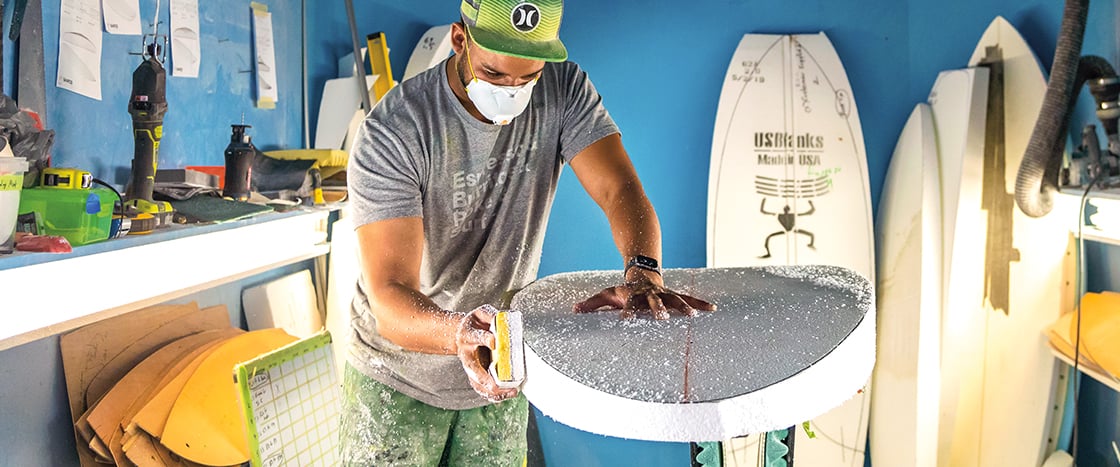Last September, Ryan Harris paddled into the ocean on a surfboard he had built. This was no ordinary board. Much of it was made from disposable surgical masks! Over the past year, people have worn these masks to limit the spread of Covid-19.
A surfboard made out of masks may seem like a crazy idea. But not to Harris! His company, Earth Technologies, in Torrance, California, crafts surfboards out of eco-friendly and salvaged, or reused, materials. The company also recycles the scraps of material that are left over from the board-making process. Sometimes, Harris even uses these scraps to make products like coasters!
Last spring, a member of Harris’s staff noticed discarded masks littering the town. Over the next few months, he carefully collected the masks, then worked with Harris to build a surfboard with them. But would the unusual surfboard work in the water?
Ryan Harris went surfing last September. But he wasn’t riding on an ordinary surfboard. Much of it was made from recycled face masks! People have worn these masks over the past year. They help limit the spread of Covid-19.
A surfboard made out of masks may seem like a crazy idea. But not to Harris! He owns the company Earth Technologies in Torrance, California. The business makes eco-friendly surfboards. They’re created out of salvaged materials. These items get saved from the trash and reused. The company also recycles leftover material from the board-making process. Harris uses these scraps to make products like coasters.
A member of Harris’s staff noticed something last spring. Used masks were littering the town. He carefully collected the masks over the next few months. Then he worked with Harris to build a surfboard with them. But would the unusual surfboard work in the water?

